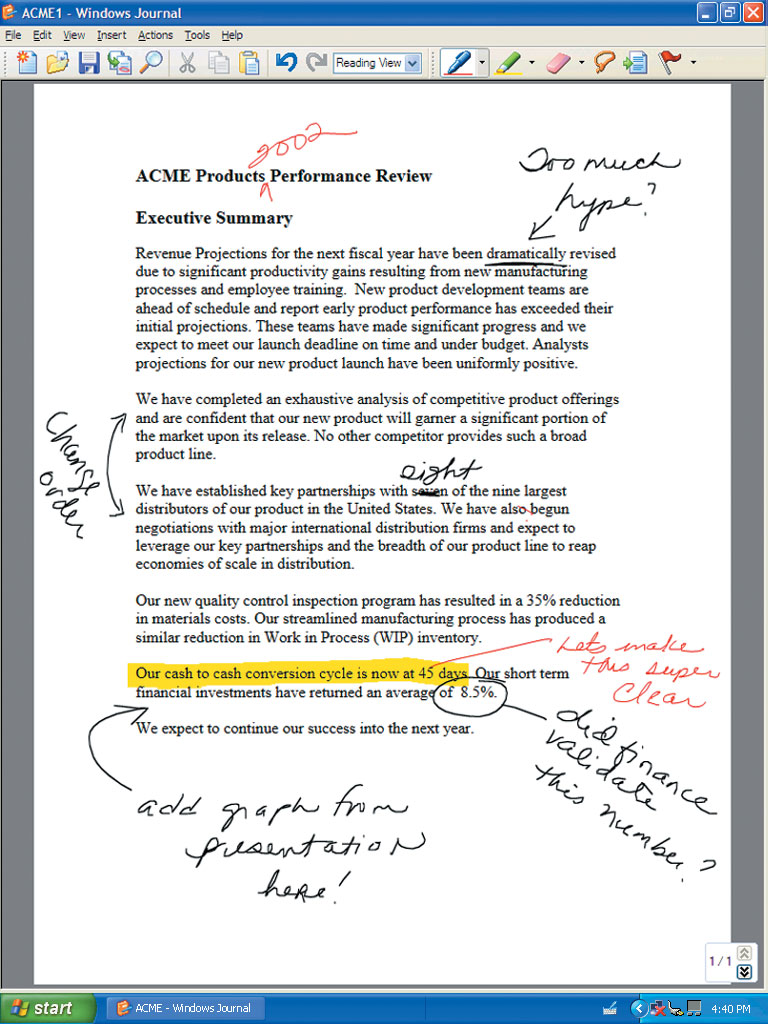|
||
Windows XPThe much-anticipated release of Windows XP was celebrated with lavish ceremonies throughout the USA and Europe. Microsoft representatives mocked Windows 95 and 98, and outlined Microsoft's progression in the development of Windows. XP has two main versions, Professional and Home Edition, which encompass the needs of users with different purposes. Professional is the basis of three secondary versions, Media Center Edition, Tablet PC Edition and Windows XP Embedded. Windows PE (Preinstallation Environment) is also based on the Windows XP Kernel. Windows XP ProfessionalWindows XP Professional benefits from the long track record of Microsoft Windows NT technology: superior operating system performance, including preemptive multitasking, fault tolerance, and system memory protection. Windows XP Professional also offers a redesigned interface and includes features for business and advanced home computing, including Remote Desktop, encrypting file system, system restore and advanced networking features. It also offers numerous key enhancements such as wireless 802.1x networking support, Windows Messenger, Remote Assistance, and the System Restore feature. Windows XP Home EditionWindows XP Home Edition offers a clean, simplified visual design that makes frequently accessed features more accessible. The product offers many enhancements aimed at home users such as the Network Setup Wizard, Microsoft Windows Media™ Player, Windows Movie Maker, and enhanced digital photo capabilities.    Windows XP EmbeddedBuilding upon the proven code base of Windows XP Professional and acting as a sucessor to Microsoft Windows NT Embedded 4.0, Windows XP Embedded delivers industry-leading reliability, security enhancements, and performance along with the latest multimedia Web browsing capabilities, and extensive device support. Embedded is the componentized version of the leading desktop operating system, enabling rapid development of reliable and full-featured connected devices. Windows XP Media Center EditionDesigned to work with the Media Center compatible remote control, Media Center Edition's interface combines access to TV, Music, Pictures, DVD and Video. The Media Center interface offers a sleek visual design, animated transitions, and easy–to–navigate menus that use familiar Microsoft Windows commands. Although not available in a retail box, MCE (Media Center Edition) has proven a hit in America were it was first launched in 2002. PC Manufacturers such as Alienware, Gateway and HP all sell computers with MCE pre-loaded. Microsoft plan to introduce MCE to Europe and other countries in 2003.    Windows XP Tablet PC EditionWindows XP Tablet PC Edition expands the Windows XP Professional platform to include software and utilities that capitalize on the tablet pen and speech capabilities of Tablet PC's. Microsoft included Windows Journal to take notes in your own handwriting, Tablet PC Input Panel to enter text when you are away from or prefer not to use your keyboard and Microsoft Sticky Notes to keep information you need handy on your desktop. With digital pen and ink, you can also mark up existing documents that you import into ink-enabled programs, such as Windows Journal or Word 2002. Digital Ink has proven to be the biggest advantage of Tablet PC Edition, enabling users to write directly onto a tablet and have the Operating System do the work for them. Released just over a year after Windows XP, Tablet PC Edition has made a major difference to the interaction of users with their PCs.    Windows XP Preinstallation EnvironmentWindows Preinstallation Environment (WinPE) is a minimal Win32 subsystem with limited services, based on the Windows XP Professional kernel running in protected mode. It contains the minimal functionality you need to run Windows Setup, pull an operating system from a network share, automate basic processes, and perform hardware validation. WinPE lets you create (diskpart.exe) and format (format.com) disk partitions, and gives you access to both NTFS file system partitions (with some constraints) and your internal network. The environment supports all mass storage devices that use Windows 2000 or Windows XP drivers, and you can incorporate additional drivers as new devices become available. While WinPE is too large to fit on a floppy disk, you can place your customized version of WinPE on any bootable media, including a CD-ROM, DVD (ISO formatted), a Remote Installation Server (RIS), or on a machine’s hard disk. WinPE uses the Windows Setup loader rather than the regular boot loader to load Windows. WinPE is customizable allowing users to Add or Remove Mass Storage Drivers and add Optional Component Packages to WinPE.  Aesthetically, Windows XP offers the consumer quite a different experience from other Windows family and Windows NT family products. Its new, fresh appearance, start menu, folder view and control panel items were alien to even experienced Windows users. Almost all kinds of system controls, such as windows frames, menu bars and items, windows control boxes on the top right corner of each window, buttons, combo boxes, list boxes and so on, had been redesigned. The start menu, which was first designed in Windows 95, has been changed a lot. It can now store customized numbers of shortcuts to recently used programs. Users can also customize it to use the old style start menu. Windows XP retail products contain software-based product activation technology, which means you need to activate your copy of Windows XP in order to use it. Microsoft Product Activation is an anti-piracy technology designed to verify that software products have been legitimately licensed. The major drawback of Product Activation in XP is that changes to components in a PC by a home user result in the OS detecting the original PC as a different PC so re-activation over the telephone is necessary. Some new PCs purchased with Windows XP pre-installed may also require activation. Microsoft succeeded in merging its two Windows operating system lines for consumers and businesses and has paved the way for future development. On page 15: Windows Server 2003 |
||
| Pages (6): << 3 4 5 >> | ||
